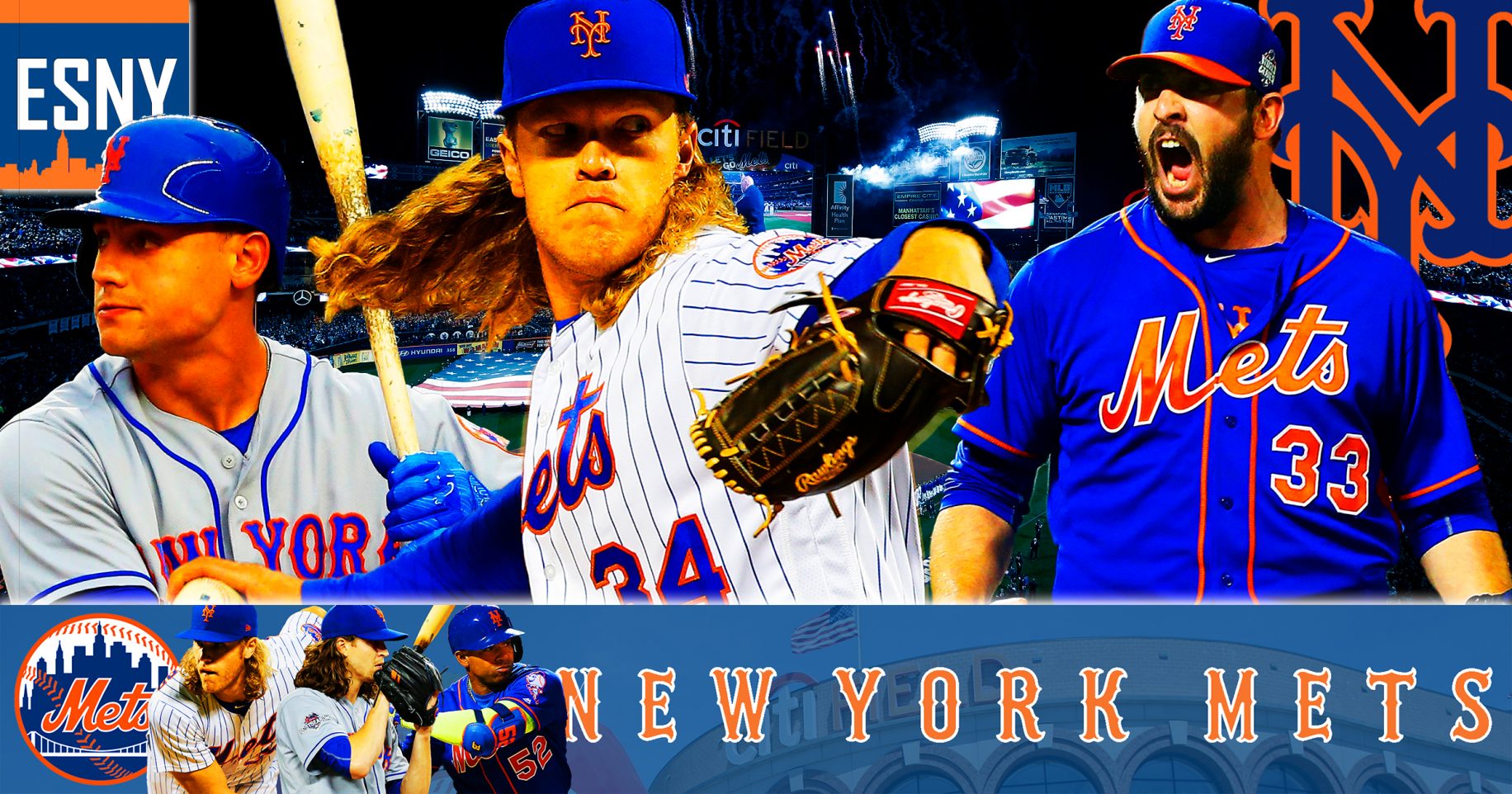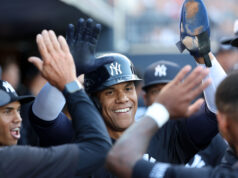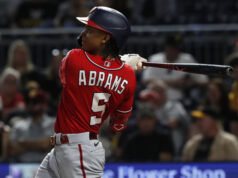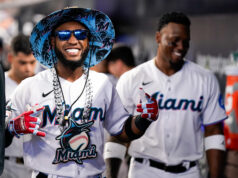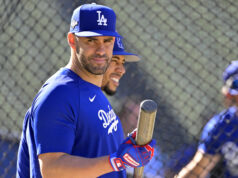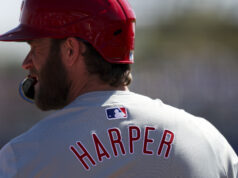The New York Mets made a flurry of aggressive moves prior to the 2015 MLB Trade Deadline, but this season calls for a different approach from Sandy Alderson & Co.
In 2015, everything was different for the New York Mets.
As last season’s trade deadline approached, the club was reeling from an aborted trade for Brewers’ outfielder Carlos Gomez. The debacle quickly became a national embarrassment when shortstop Wilmer Flores – the man the Mets agreed to send to Milwaukee – was seen wiping tears away while taking ground balls on the infield dirt.
Though the Mets had already struck deals to acquire veteran plugs Kelly Johnson, Juan Uribe and Tyler Clippard as deadline day arrived, there was still a slugger-sized hole in the middle of the team’s lineup.
Yet, as the minutes faded leading up to the 4 p.m ET hour, no player with either the hitting caliber or track record of Carlos Gomez was traded to the Mets. With Gomez suiting up for the suddenly-competitive Houston Astros, options grew scarce for a desperate front office.
Left-handed hitting Jay Bruce of the Reds was in the midst of an underwhelming season in Cincinnati, and his club control was appealing – but at the same time represented a road block – for New York. Were the Mets to swing a deal for Bruce, whose contract expired after 2017, once-prized righty Zack Wheeler, still a year away from recovery, would be the hypothetical return. Though general manager Sandy Alderson indicated a willingness to trade the Tommy John recipient in the failed Gomez deal, he was less inclined to do so for a stocky outfielder who was, essentially, a carbon copy of Lucas Duda.
Instead, Alderson focused his attention on Detroit.
If reason steered the ship in the Tigers’ front office – which it did indeed under the helm of GM Dave Dombrowski – star outfielder Yoenis Cespedes would be changing hands come 4 p.m. The team staked out on seller avenue with trades of Joakim Soria to Pittsburgh and David Price to the surging Jays. Even still, it took until 13 minutes prior to the fateful hour for the veteran GMs to connect on the impact deal it would soon become.
Yoenis Cespedes was traded for the fourth time in a calendar year, and right-handed pitching prospect Michael Fulmer – who was thought to be the next Met flamethrower to reach the big leagues – was the reward for a patient Dombrowski.
Equipped with a big bat to repair one of the league’s least productive offenses, the Mets could unquestionably say that they “went for it.” Recognizing the team’s envied stable of impressive arms, from the experienced trio of Jacob deGrom, Matt Harvey, and Bartolo Colon to the clubs’ promising rookies Noah Syndergaard and Steven Matz, the front office saw no time to waste. With the fortune of an unmatched staff, there was no justification to not go for it.
In this quest for a push toward October, the Mets traded eight pitchers from the farm system. Thus, a year later, the Mets are eight arms thinner, and the depth of their farm is somewhat eroded.
Was it worth it? Without a doubt, it was.
In 2016, however, the narrative should and – as all implications suggest – will be different for the New York Mets.
Michael Fulmer’s incredible rookie year – which may earn him honors in the American League come November – should evoke no condemnation of the fateful trade struck on July 31, 2015. In fact, that trade should continue to draw praise. Cespedes is batting a .295 with a team-best 21 home runs in the midst of his All-Star campaign and his center field play has been without the expected hiccups. Mention of that ridiculous post-deadline stretch with the Mets is just not necessary – it caught the eyes of every baseball fan across the sport. Suffice to say, the Cespedes addition was a heavy factor in the team’s eventual takeover of first place and its playoff berth.
In 2016, however, the narrative should and – as all implications suggest – will be different for the New York Mets.
The team is more well-rounded than last year’s group with options to pluck from at every position after swinging meaningful deals to bring in Padres’ first baseman James Loney – then wasting at bats at Triple-A – and, for the second year in a row, acquire utility/left handed batsman Kelly Johnson. With these two additions, along with the promotion of former first round pick Brandon Nimmo, the Mets front office has already done its part to shore up the losses of David Wright and Lucas Duda to injury, as well as patch up the poor play of Michael Conforto. With Duda on the mend and Conforto now back in the big leagues, the Mets sport depth across the diamond.
So, unlike last season, the Mets are well stocked and already in position to reach October. Besides some minor additions, no solo savior seems destined to push the Mets past the barrier which they need to penetrate: improving their winning percentage roughly 20 points in an effort to reach 90 wins.
Sandy Alderson has echoed these sentiments, predicting this round to shape up a bit differently: “There is no single acquisition that’s going to change what’s transpired over the last two months. It’s going to have to come from within,” he told ESPN.
Still, the Mets will maintain a market presence, lurking around with an opportunist mindset — the club remains open for business. “There may be things we can do that can improve the team…Certainly we’ll be monitoring the market,” added Alderson.
In all likelihood, in a potential shakeup which runs contrary to the team’s much-hyped pitching staff, the Mets will add to just that unit. As Zack Wheeler’s recovery continues to hit speed bumps, the Mets cannot rely on the same insurgency expected when Wheeler was working his way back smoothly. Instead, he continues to work through a fair share of setbacks; the Mets, for their own good, can only wait on Wheeler.
With Wheeler’s status suspended in the realm of uncertainty, and Matt Harvey’s all-too-certain shelf life (the remainder of the 2016 season due to thoracic outlet surgery), the starting rotation is left wading in the waters occupied by the team’s next tier of pitchers. Options include Logan Verrett (3-6, 4.21 ERA in MLB), Rafael Montero (4-6, 7.30 ERA in AAA), and Gabriel Ynoa (9-4, 4.09 ERA in AAA). None elicit a Messiah-like feeling, and none impress scouts and baseball people as playoff-ready pitchers.
In the bullpen, the Mets possess a fine core of right-handers Jeurys Familia, Addison Reed, Hansel Robles, and lefty Jerry Blevins. Beyond this quartet, however, the Mets don’t have many reliable arms to speak of. Antonio Bastardo, the highest paid pitcher in the ‘pen, has struggled mightily, and neither Eric Goeddel nor Verrett have locked up a spot. This leaves the Mets clamoring for a second left-handed pitcher – an ideal trade would have them oust Bastardo in the process, though his contract which was once seen as a steal now looks to be a burden – and another stable arm to trust in the seventh inning. If the starting pitcher and mid-relief corps can lock up the first seven innings of a given game, the final six outs are safe in the hands of Reed and Familia.
Last season’s storybook narrative was a well-advised gamble to make a run for the distant memories of postseason baseball. All things considered, no one around the Mets looks back with any regret.
With the dawn of a new season’s deadline upon Queens, the team is in a better position than its record reads, and the future will lie in the health and execution of a talented group of players.
So as Alderson readies himself for a modest spend in the midst of a trade frenzy, New York should find comfort in the reigning National League Champion form which it holds close to chest, with an understanding that the team is manned with familiar troops to reach the same high grounds of World Series baseball.


